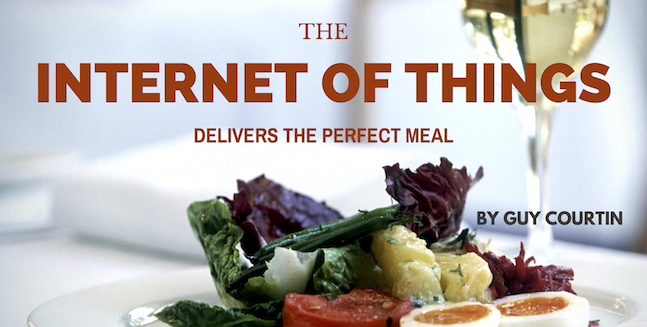Paleo, local, vegan, extra cheese, gluten free -- consumers are demanding when it comes to food. How are restaurants and food manufacturers to satisfy consumers that want each meal tailored to their dietary preferences? Technology of course. My latest report, The True Value of Technology for Food Supply Chains highlights opportunities for food retailers to satisfy customer demands with the help of the internet of things and big data technology.

The True Value of Technology for Food Supply Chains
In 2015, grocery, restaurant and food services accounted for over 20 percent of U.S. retail spending. Food choices have evolved from simply being about nourishment into a statement of character. People define themselves by the restaurants they frequent or by espousing a vegan, gluten-free or paleo diet. Consumers frequently scrutinize their food: Is it GMO-free or organic? Not only are consumers picky, consumers feel empowered to make demands of food purveyors. Consumers want food customized to their dietary preferences -- they want their food personalized.
But how should food suppliers deliver mass personalization of food products given the fragility of the food supply chain? The answer lies in disruptive technologies like the internet of things and big data analytics.
IoT enabled farming equipment, sensors, smart infrastructure, and data collection are already revolutionizing farming. Sensors and big data analytics improve freshness tracking and monitor food safety during distribution. Big data analytics and IoT sensors ensure inventory and predict consumer trends at the last stage of the food supply chain. Moreover, the implementation of IoT sensors at every stage of the food supply chain provides food suppliers the opportunity to protect their margins and make data-driven decisions about growth.
Supply chains have always been heavily dependent on data. The food supply chain is no exception. Consider variables such as perishability, shelf life, recipe mix, commodity price fluctuation, and the ability to better use data in the management of food processes takes on greater significance. There is an important opportunity for cloud- based data-handling software to bring the scale and flexibility necessary to keep pace with the changing winds in the food industry. As restaurants and grocers look to keep up with consumer demands around food sourcing, the ability to quickly add new sources and their data can be handled by these platforms. Timely and actionable data is available to the food supply chain. It is up to food businesses to seize the opportunity.
Click here to download a short excerpt of this report.


